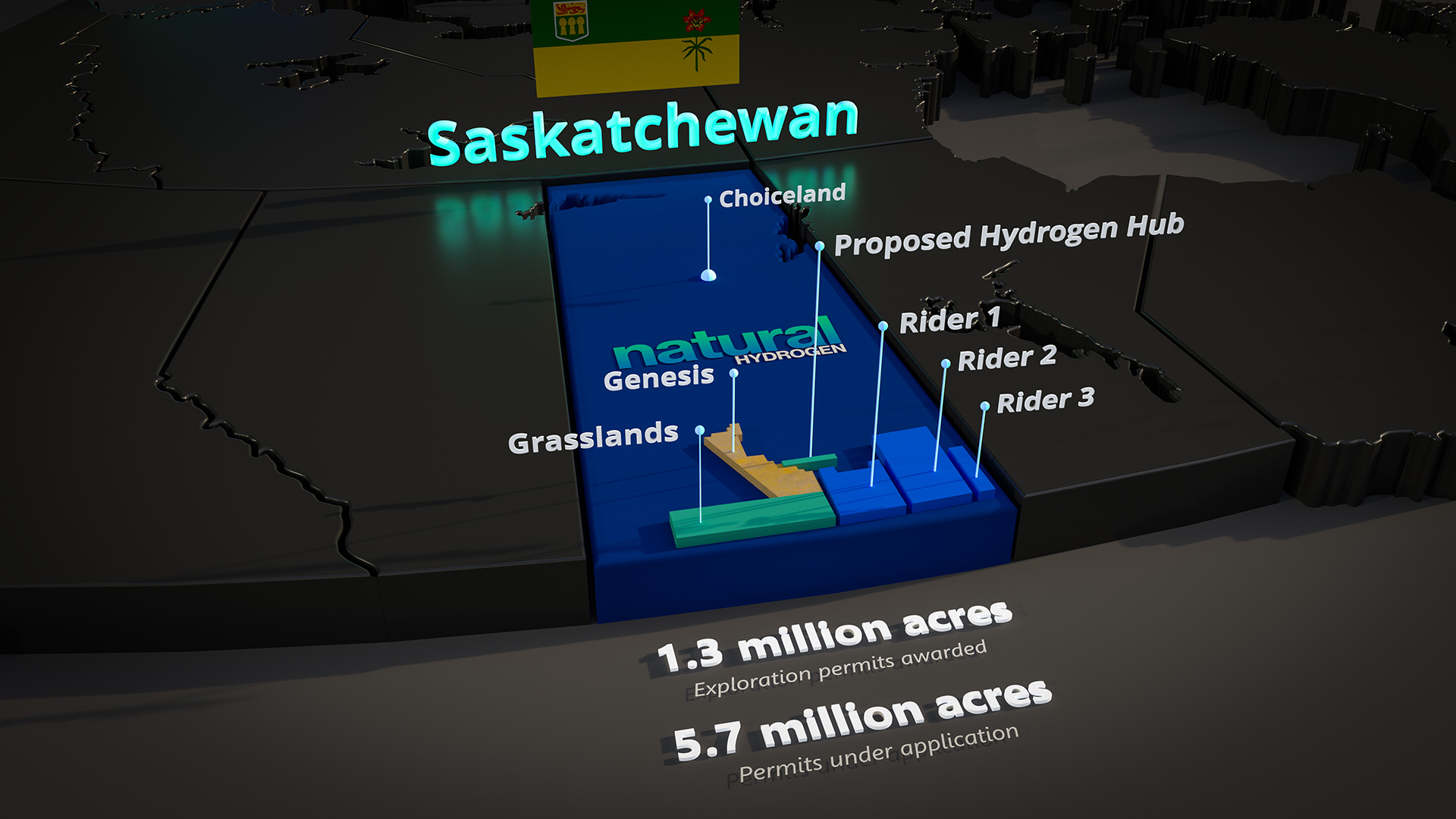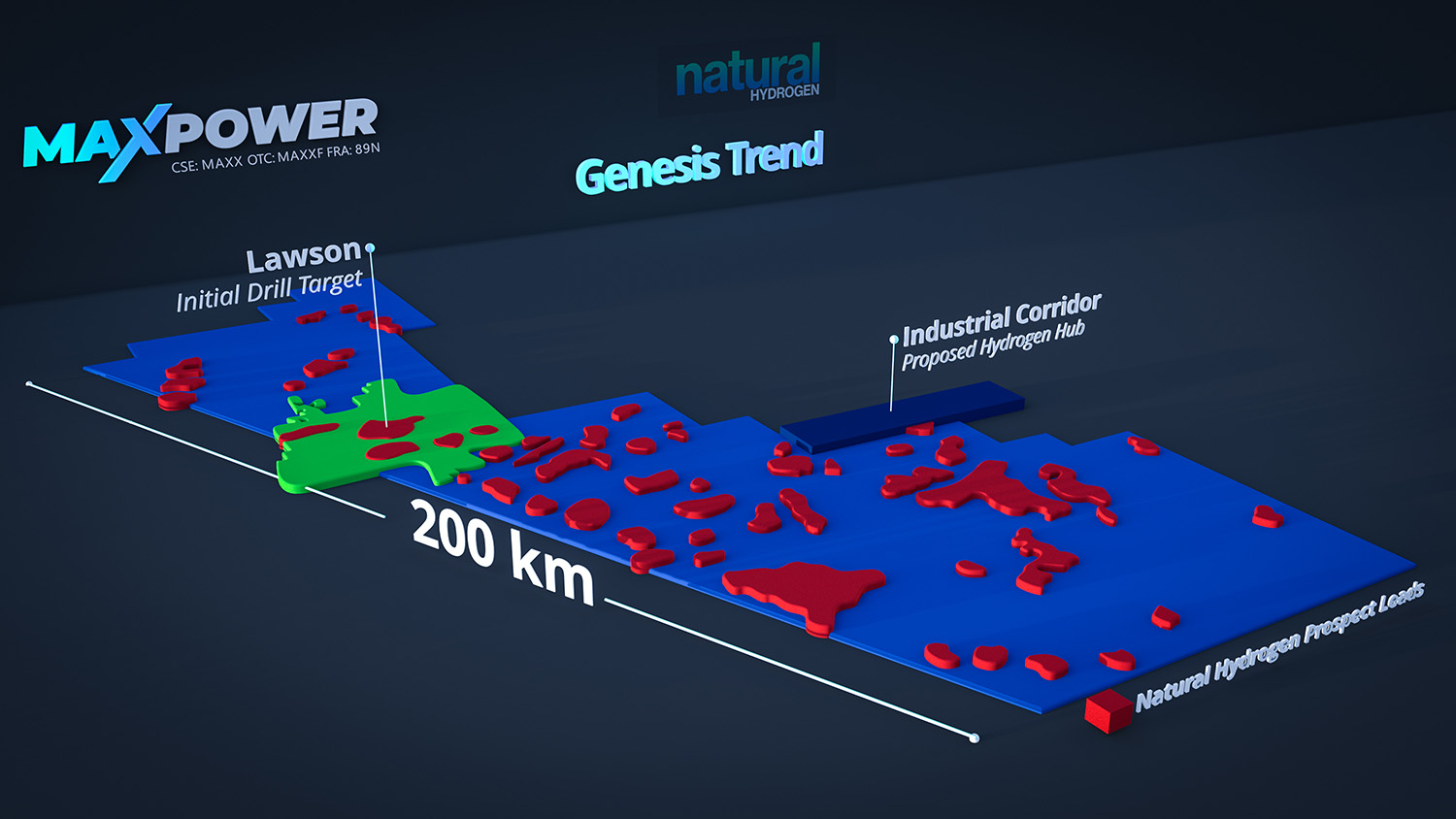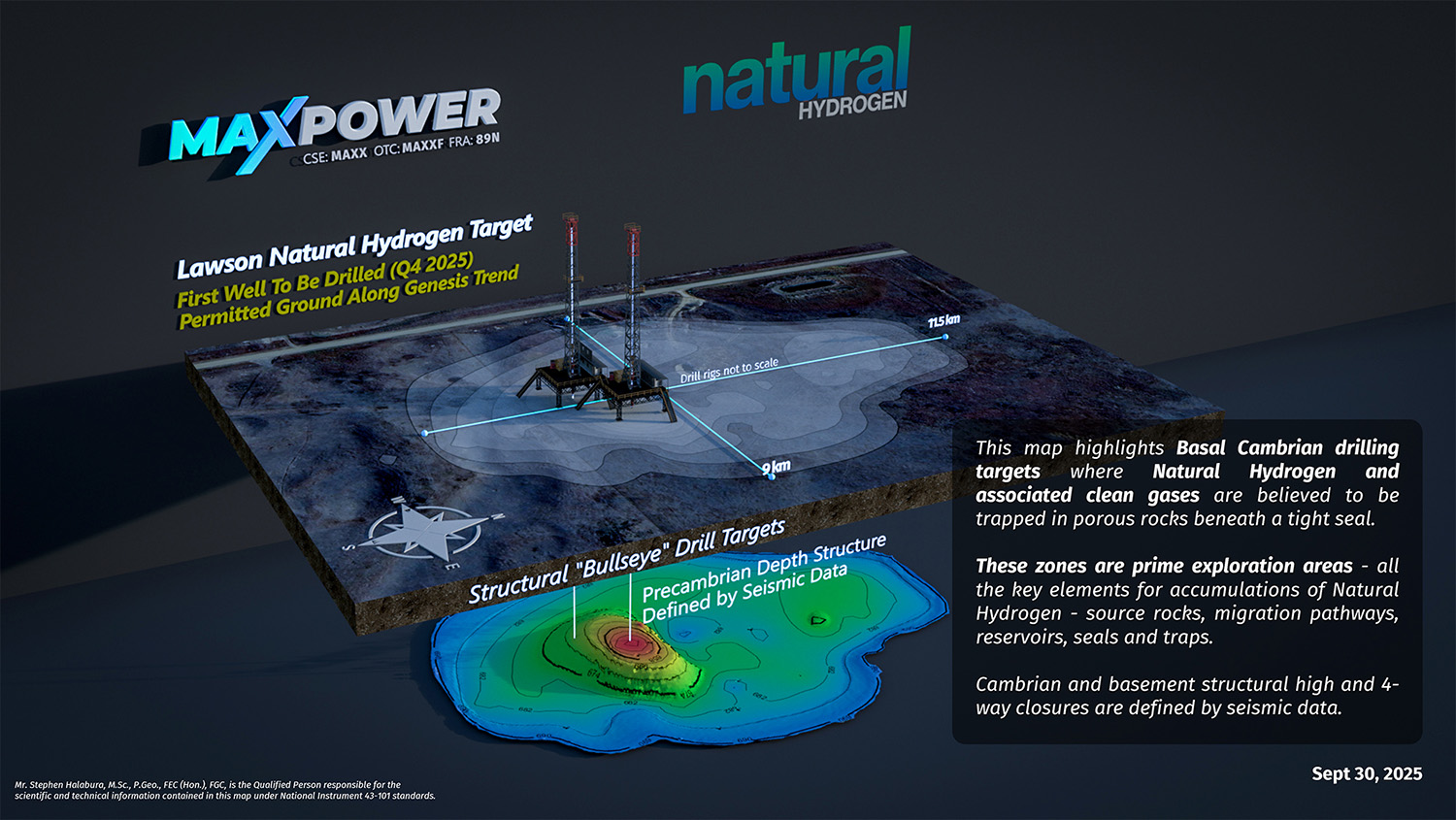MAX Power’s Saskatchewan Natural Hydrogen Project
READY FOR FIRST-EVER DRILLING!
1.3 Million Acres Permitted
5.7 Million Acres Under Application
Target-Rich Areas Across Southern Saskatchewan
MAX Power is advancing Canada’s largest permitted land package for Natural Hydrogen exploration and development with first-ever drilling slated to commence in Q4 along the massive Genesis Trend contiguous to an Industrial Corridor and proposed Hydrogen Hub.

Genesis Trend
The Genesis Trend has unusual scale potential for any resource project – it’s a 200-km corridor up to 75 km wide defined by an all-important flanking “Salt Barrier”, and the intersection of exotic terrane mobile belts and basement structures interpreted to be favorable for hydrogen generation and migration. To date, some 40+ early prospects have been identified along Genesis with Lawson being the most data-rich.
Notably, Genesis is located adjacent to the Regina-Moose Jaw Industrial Corridor (RMJIC), Saskatchewan’s first proposed Hydrogen Hub, where there is valuable infrastructure including a hydrogen refinery. The RMJIC is home to major industry including fertilizer producers and some of the province’s largest consumers of natural gas. This locality reduces risk by offering diverse routes to market including blending into the gas grid to decarbonize industrial heat, or as an industrial feedstock.

Lawson: Canada's First Dedicated Natural Hydrogen Well
- First mover, first well: Lawson is designed as Canada’s first deep well specifically targeting Natural Hydrogen, initiating a multi-well program across MAX Power’s ~1.3 million acres – the largest permitted Natural Hydrogen land package in the country with another 5.7 million acres under application.
- Complete five-element system: At Lawson, integrated datasets indicate the five critical elements for a potential accumulation – source rocks, migration pathways, reservoirs, seals, and traps – are all present, in addition to 4-way closure;
- Data-driven targeting: Lawson has been refined with ~180 line-km of vintage and proprietary 2D seismic, regional aeromagnetics/gravity, subsurface mapping, and other data processed by MAX Power’s in-house Prospect Ranking Tool.

Grasslands Project
MAX Power’s initial focus at Grasslands is on a high-priority area where an extensive review of publicly accessible well data has revealed a recent inadvertent and initially overlooked discovery of Natural Hydrogen associated with rare basement source rocks, the first known such occurrence in Western Canada. The occurrence is in a well offsetting the property, which was drilled in 2022 by an exploration company not focused on Natural Hydrogen, and for whom the current MAX Power technical team provided geological and operational support. In that role, the MAXX team was responsible for organizing, collecting, and interpreting geophysical, geological, and gas composition data.
Permits covering an area stretching 75 km east-west and up to 10 km north-south were acquired from the government next to this discovery, amplifying MAX Power’s first-mover advantage. As the map outlines, this is a highly strategic area for Natural Hydrogen exploration.
Adjacent to three sides of Grasslands are producing helium wells owned by privately held North American Helium, demonstrating that this broad regional area is prospective for clean gases. Helium is a byproduct of the radioactive decay of elements like uranium and thorium, which can also produce hydrogen through various processes.
MAX Power will be releasing more details regarding this very prospective land package in the near future.

Rider 1, Rider 2, Rider 3
MAX Power’s original Rider Project has been extended eastward to the Manitoba border to cover favorable geophysical anomalies and basement architecture/exotic terranes that tie in with MAX Power’s broader exploration requirements for Natural Hydrogen that prospective areas in terms of potential volume must exhibit clear opportunity for size, scalability and sustainability. The presence of deep-seated faults and structural features like domes and arches may have facilitated the upward migration of hydrogen, acting as conduits from the basement rocks into overlying formations where it may have accumulated.
Choiceland
MAX Power has acquired exploration permits covering a significant part of the Choiceland area of north-central Saskatchewan following receipt of a research report from a consulting geologist regarding the potential for generation of hydrogen in a 43-km belt of iron formations between Choiceland and Nipawin.
Trailblazing a New Natural Hydrogen Arena
Learn more about MAX Power’s potential game-changing opportunity in Saskatchewan through this video presentation by geoscientist Steve Halabura, MAX Power’s lead technical advisor. Steve was instrumental in the early formative stages of the only two Saskatchewan greenfield potash mines to come into existence in the 21st century, these being BHP’s Jansen Project and K+S’s Bethune mine. Jansen is the largest private investment ($14-billion) in Saskatchewan history. Steve has decades of successful experience in the province’s resource sector and has a deep understanding of the geological controls on the accumulation of hydrogen, helium and other industrial gases.


